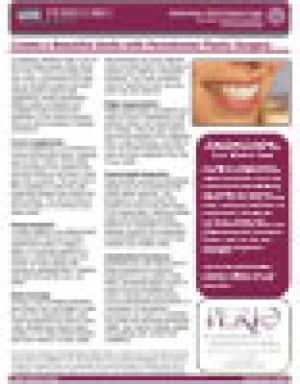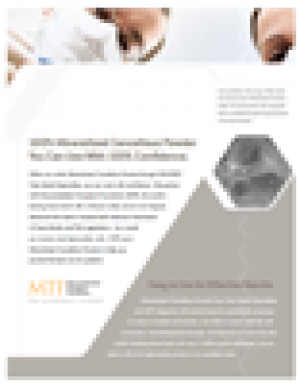When you trust your dental implant procedure to our expert doctor here at PerioNYC, you can be assured that every perceivable detail of your treatment has been considered. We want what’s best for you and we’ll recommend the treatment and procedures that are necessary to accomplish that goal.
3D digital imaging will be used to determine the quantity and the quality of the upper or lower jaw bone. In order for the implant to become properly integrated, the bone must be thick enough and deep enough to surround the implant post. If the bone at the location of your proposed dental implant is not sufficient, the potential for long-term success will be greatly reduced.
To ensure the presence of healthy, dense bone, it may be necessary to perform a bone augmentation procedure prior to the placement of the implant. The type and extent of the augmentation procedure will depend on your specific needs. Your own tissue, that of a human donor (Straumann® Allograft (pdf) or Symbios™ Allograft (pdf), or animal tissue (ie Geistlich BioOsst® ) can be surgically transplanted in localized areas to correct bone defects from bone loss, yielding an improved bony ridge.
What Is Ridge Augmentation?
Significant bone loss may occur after a tooth is lost or extracted. Bone loss happens because the jawbone is no longer holding a tooth (or teeth) in place and, like an under-used muscle in the body, begins to recede. The atrophic area can look unattractive and unnatural with recessions and indentations. Receded bone and tissue can also affect the placement and appearance of implanted teeth as they may appear longer or larger compared to neighboring teeth.
Ridge augmentation uses bone grafting to rebuild the gumline and jaw, restoring its natural contours and preparing the mouth for dental implants. All bone augmentations should only be performed by an experienced periodontist.
Bone Grafting and Ridge Augmentation: Frequently Asked Questions
What is a bone graft?
A bone graft is a surgical procedure in which Dr. Gottesman, Pitman, and Bogart inserts donor bone material into a site that is lacking adequate bone tissue. The defect may be a congenital one, or the patient may have lost bone following tooth loss due to jawbone resorption. Bone grafting is used in a ridge augmentation procedure to restore the natural contours of the gumline and jaw.
When is bone grafting necessary?
Bone loss can present an obstacle to patients who want to get dental implants, as they need sufficient bone at the implant site to support osseointegration. A bone graft may be recommended for these patients to improve their chances of successful dental implant placement or to improve the contours of the jaw in an area that has a defect, giving it a more natural contour.
Why will a bone graft improve my chances of long-term dental implant success?
After the patient has healed from the bone graft, the donor bone will be available for osseointegration, and it can help to strengthen the bond between the bone and the implant.
How will you determine if I need a bone graft?
Our dentists use state-of-the-art three-dimensional imaging for a lifelike view of the jaw during dental implant treatment planning. These images will illustrate the quality of available bone at the implant site and may indicate that supplemental bone material is warranted.
Where will you get the bone graft material?
The bone graft material may be obtained from elsewhere in your body or from another human or animal donor.
How will bone grafting affect the timing of my dental implant placement?
Patients will need to allow for additional time to heal from the bone graft procedure before moving forward with dental implant placement, so it likely will extend the overall treatment timeline. However, this additional investment of time is well worth it for a patient who wants to maximize the lifespan of dental implants.
Where is the bone graft procedure performed?
A bone graft procedure can usually be completed in a specialty surgical outpatient setting, such as that found in the Manhattan office of Dr. Gottesman, Pitman, and Bogart, with patients returning home a few hours later.
What should I expect as I heal from the bone graft?
Many patients will return to their normal routines within a few days of the bone graft surgery. In the days immediately following the procedure, Dr. Gottesman, Pitman, or Bogart will give you specific instructions to follow to reduce your risk of complications. For example, you may need to adjust your diet for the first several days after your bone graft. Do not hesitate to ask any questions you may have about this aspect of your care.


































